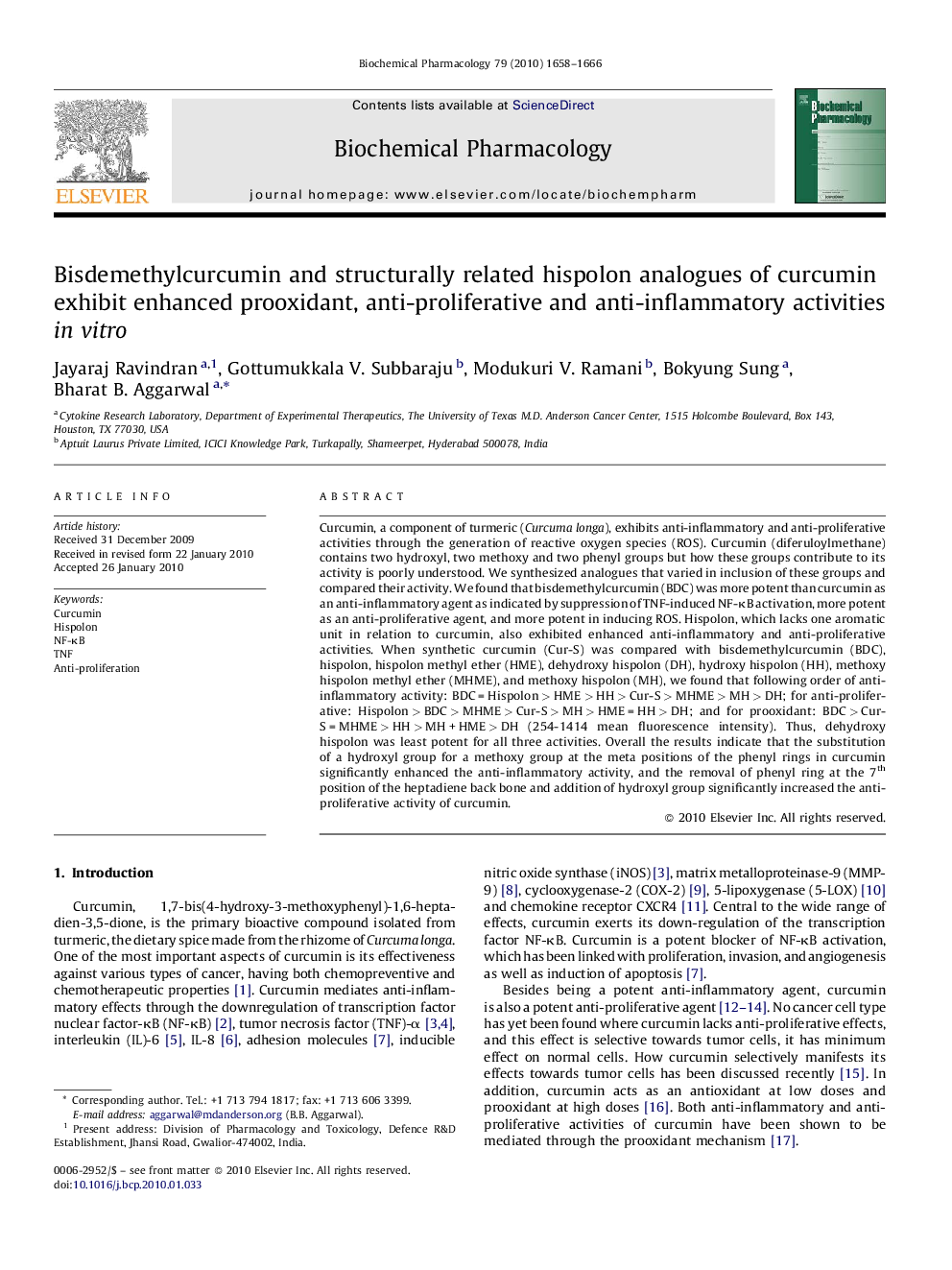| کد مقاله | کد نشریه | سال انتشار | مقاله انگلیسی | نسخه تمام متن |
|---|---|---|---|---|
| 2513331 | 1118407 | 2010 | 9 صفحه PDF | دانلود رایگان |

Curcumin, a component of turmeric (Curcuma longa), exhibits anti-inflammatory and anti-proliferative activities through the generation of reactive oxygen species (ROS). Curcumin (diferuloylmethane) contains two hydroxyl, two methoxy and two phenyl groups but how these groups contribute to its activity is poorly understood. We synthesized analogues that varied in inclusion of these groups and compared their activity. We found that bisdemethylcurcumin (BDC) was more potent than curcumin as an anti-inflammatory agent as indicated by suppression of TNF-induced NF-κB activation, more potent as an anti-proliferative agent, and more potent in inducing ROS. Hispolon, which lacks one aromatic unit in relation to curcumin, also exhibited enhanced anti-inflammatory and anti-proliferative activities. When synthetic curcumin (Cur-S) was compared with bisdemethylcurcumin (BDC), hispolon, hispolon methyl ether (HME), dehydroxy hispolon (DH), hydroxy hispolon (HH), methoxy hispolon methyl ether (MHME), and methoxy hispolon (MH), we found that following order of anti-inflammatory activity: BDC = Hispolon > HME > HH > Cur-S > MHME > MH > DH; for anti-proliferative: Hispolon > BDC > MHME > Cur-S > MH > HME = HH > DH; and for prooxidant: BDC > Cur-S = MHME > HH > MH + HME > DH (254-1414 mean fluorescence intensity). Thus, dehydroxy hispolon was least potent for all three activities. Overall the results indicate that the substitution of a hydroxyl group for a methoxy group at the meta positions of the phenyl rings in curcumin significantly enhanced the anti-inflammatory activity, and the removal of phenyl ring at the 7th position of the heptadiene back bone and addition of hydroxyl group significantly increased the anti-proliferative activity of curcumin.
While turmeric (Curcuma longa) is the source of curcumin, the mushroom Phellinus linteus called “meshimakobu” in Japanese, “song gen” in Chinese, and “Sang-Hwang” in Korean is the best source of hispolon.Figure optionsDownload as PowerPoint slide
Journal: Biochemical Pharmacology - Volume 79, Issue 11, 1 June 2010, Pages 1658–1666